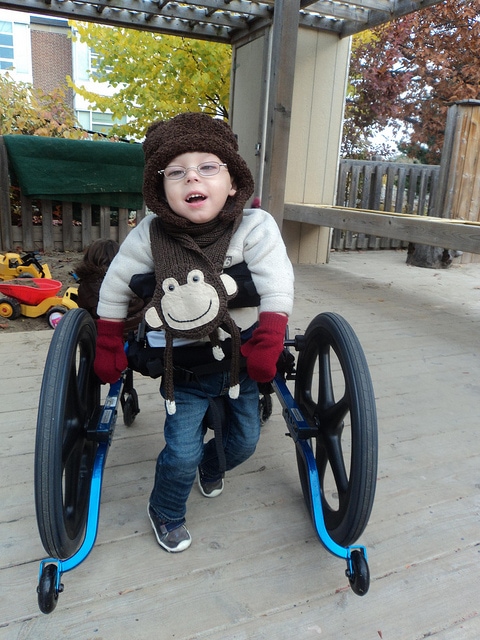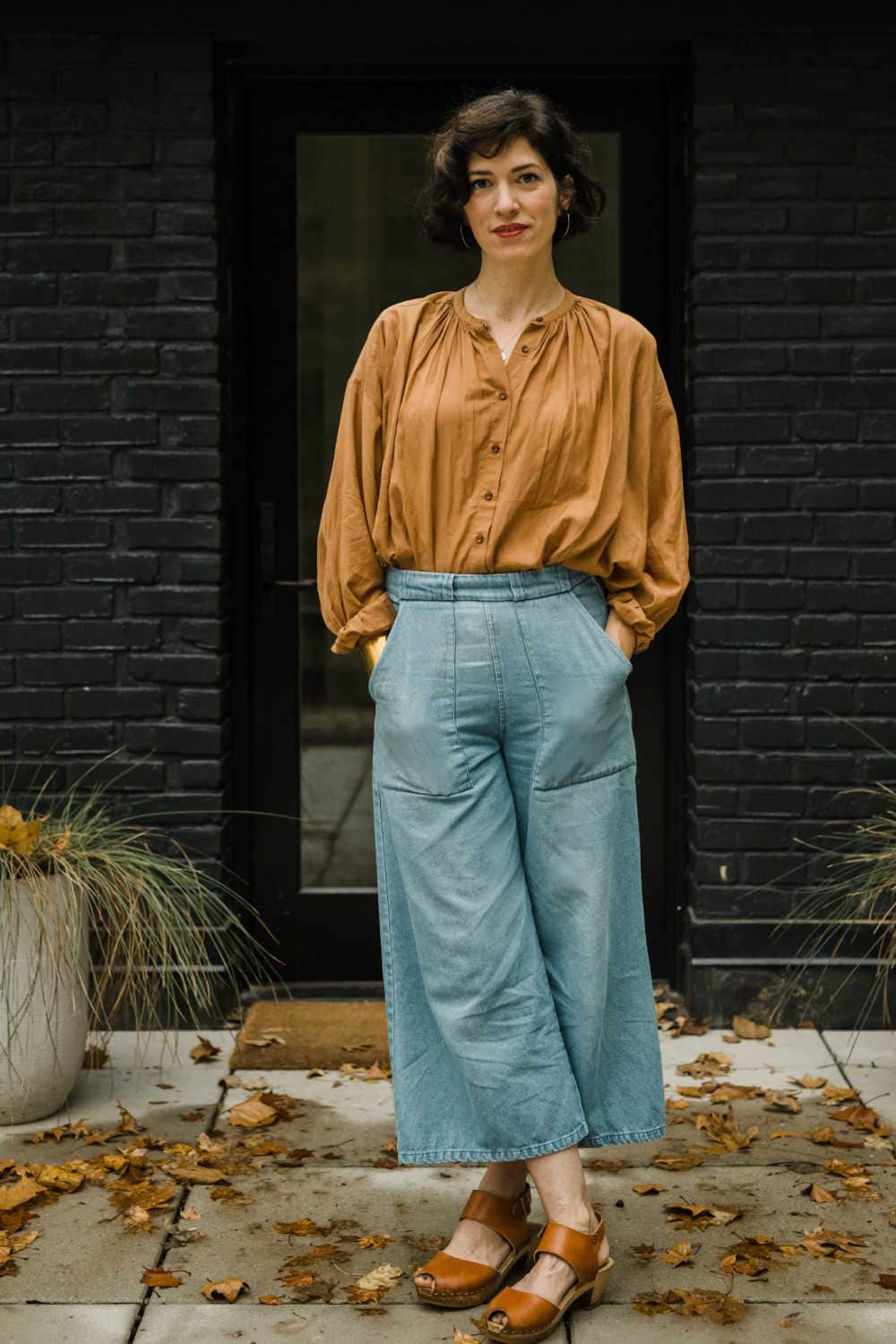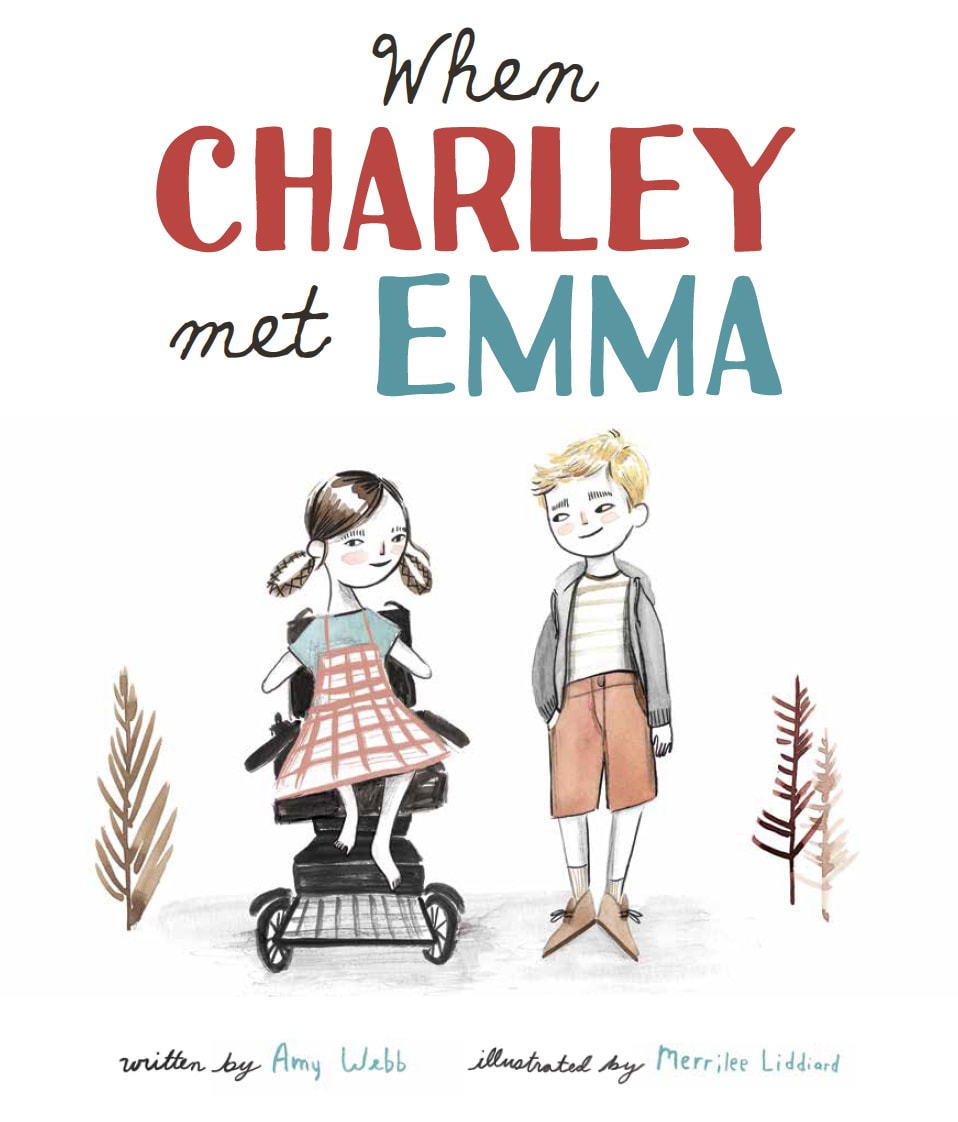Hi. We’re the Sharps! We currently live in Toronto, after living in Cairo for two years. Our son Sebastian was born in London, (UK) about three and a half years ago. Due to a traumatic birth and subsequent brain injury from lack of oxygen, Sebastian has (dystonic) cerebral palsy. But it doesn’t have him. He already has more stamps in his passport than most adults. He’s very easy going, and has his dad’s sense of humor and his mama’s dramatics. You should see his pout. He loves school and has a lot of girlfriends. His favorite author is Mo Willems, and he’s a big fan of Elmo. Sebastian doesn’t talk so he uses a program on his iPad, as well as facial expressions and sounds to communicate. He loves music, swimming and horseback riding (Hippotherapy) His smile can brighten the greyest day. Come visit us at Free As Trees, www.karamelissa.wordpress.com for more of our adventures.
***************
Miggy: Your son, Sebastian, has Cerebral Palsy, a condition that came about due to a traumatic birth and lack of oxygen at birth. My first question is can you educate us about the causes of CP–is it always due to lack of oxygen at birth? Can a fetus have CP in the womb, or is it always caused by external circumstances?
Kara: Cerebral Palsy is an umbrella term for motor disability. It can be caused in many ways and there are also different kinds of CP. Yes, Sebastian’s CP was caused by grade 2 HIE, or lack of oxygen to the brain just before, during and after birth. CP can also be caused by an infection in the womb. Damage to certain areas of the brain cause different types of CP. Strokes, brain bleeds, infections, any long period of time with a lack of oxygen. Some premature babies get CP due to complications from their early birth, such as a brain bleed. CP can also be caused from any type of brain damage in the first years of life. Just as there are many causes of CP, there are also different types. No child is the same. The area of Sebastian’s brain which was damaged is called the basal ganglia. His type of CP is specific to damage in this area. He has dystonic CP, with mixed tone. Meaning his trunk is low tone and his extremities vary from high to regular tone. His CP affects all parts of his body.
For more information about causes and types of CP, check out Reaching for the Stars.
Miggy: Second can you talk a little bit about your thoughts and feelings regarding your sons birth. Was this outcome preventable? Have you reconciled “what could have been” with the reality of Sebastian’s condition? How has your birth experience changed your view on birthing in general? (I know that’s a lot of questions about birth!)
Kara: We believe that had there been proper monitoring and intervention during the labor and birthing process, Sebastian’s CP could have been prevented. I think that you go through stages of grief over what you thought would happen, how you imagined your child would be and then accepting him as he is. For some it takes longer than others. I don’t think it took us too long. We moved from London, UK to Cairo, Egypt when Sebastian was 3 months old. There were no resources for me and once Sebastian was officially diagnosed with dystonic CP, I started reading everything I could online and reaching out to support groups, online. I found blogs of moms with kids like Sebastian and I met some of them when we traveled to Australia to visit my husband’s family. We just lived our lives the best we could and enjoyed our son, taking pride in the little things. I think the trauma of the birth took longer to get over than the acceptance of our son’s disability. It was a long time before we felt ready to have another child. Now that I am pregnant (15 weeks) I have thought a lot about the birthing process and how I want it to be this time. I have done a lot of writing and letting go with Sebastian’s traumatic birth so that I can be ready for my next birthing experience.
Miggy: Explain how Sebastian’s special needs affects your day-to-day life?
Kara: Sebastian is our only child right now so I don’t know the difference between how a typical child’s needs affect daily life, although I do imagine there are some! Sebastian goes to pre-school in the morning for two hours in an integrated program, 50-50 typical and special needs kids. It’s a fabulous program, although I never imagined I would send my child to ‘school’ at such a young age, he started at 2.5 years. As a stay at home mom, and a teacher prior, I had planned to stay at home when Sebastian was born, regardless, so the thought of pre-school had never entered my mind. It also affects us financially since it is an additional cost that we did not plan on, but it has helped us have access to other programs/therapies for Sebastian as well as gives him a space for independence and social development. Many afternoons a week we have therapies which we travel to. Sometimes 3-4 times a week. On the odd week we have something every day, if a doctor appointment is mixed in and we are really lucky/happy to have a couple afternoons off a week too. On the afternoons off we try to hang out and do typical things, like play with toys, go for a walk, and even watch a fun movie once in a while if the weather suits. Sebastian is not physically independent so he needs me to help him play with toys, etc., although there are some toys he can press buttons on and interact with when he is in supportive seating. I can use this time to also integrate some of the things we are doing in therapy, but mostly we just try to have fun and take a break from the regular routine. I make all of Sebastian’s food and feed it to him, so meal times can take a bit of extra time. Sebastian is also non-verbal so we are working with a team to create a communication book as well as use different applications on the iPad. I involve Sebastian in everything I do, such as making dinner. I take naps with him or am at least in the room, in order to monitor whether he has a seizure or not, as he has partial seizues sometimes within the first 20 mins of sleeping. Sebastian started having seizures the summer before last. Thankfully while we lived in Egypt he was seizure free. His seizures are caused by the damage to his brain and are ‘controlled’ by two different types of seizure medications. So after I learned all about cerebral palsy, I then had to learn about the world of epilepsy/seizure disorders.
Miggy: What are the biggest worries you face for your Sebastian?
Kara: Not being included in the world around him. I am a huge advocate for inclusion (done properly) in the education system. I have seen how much it has already benefited Sebastian and can only imagine what segregation would do to his development. I want Sebastian to enjoy life and discover the world around him. And he does that. I want to be able to provide opportunities to help him continue to grow and develop in this way. Do I worry about the future, like who will take care of him when we aren’t here to do so? Nope. I worry about finding him the best school to go to. I worry about doing as much as I can to help him be as involved and independent as possible. And I’m not a fan of the seizures. At all.
Miggy: And what are some of the triumphs you hope for?
For happiness. For living a full life, engaged in the world around him. For some independence.
Miggy: How can people best approach or respond to Sebastian?
Smile and say hello. Give him time to respond to you.
Miggy: Is there something you wish other people knew so as to avoid awkward or hurtful situations?
Kara: Sebastian is 3 and a half. He is small for his age. Sometimes people call him a baby or treat him like a baby because he looks smaller and also can’t talk. He also wears glasses, so that gets him a lot of attention. When he is in his wheelchair sometimes people smile, sometimes people look past him, or ignore their children’s questions about him. I want him to be treated like a child. He understands conversations and actions around him and with him. I want people to see him for who he is an not for the chair he is sitting in and I most certainly do not want people to ignore him or shhh their children. I’d be happy for them to come up and say hello and ask questions or introduce themselves. I used to want to put a sign on his stroller that said “I like smiles, share one instead of staring.”
Miggy: What is the biggest lesson you’ve learned since becoming a special needs mom?
Kara: You can’t worry about everything, especially about the future. You can’t change the way things are, you just have to go with the flow and work with what you’ve got. Lean on each other. Ask for help or support when needed. Meet other moms in similar situations. Life is good. Because he’s in it. And he almost wasn’t.
***************
I want to thank Kara for sharing her story with us. So many good thoughts and I love her parting line, “Life is good. Because he’s in it.” Isn’t that how we all feel about our children, special needs or not? And isn’t Sebastian just the cutest? No wonder he has so many girlfriends.
Thanks again to everyone who has emailed/posted a comment for SNS families. I got a lot of emails so I’m still trying to get to everyone! But keep ’em coming. Again, if you know someone who would make a great Special Needs Spotlight please email me at thislittlemiggy at gmail dot com.
Have a great weekend!


.jpg)
.jpg)
.jpg)


Kara is a friend of mine from high school, and while I have only had the chance to meet Sebastian once, every year Kara has allowed me to tell Seb's story to our children at church during worship, using all those beautiful pics from her blog. We are all learning so much from Sebastian! Kara is an amazing mother, thank you so much for featuring her family.
What a sweet boy. His smile says it all 🙂
lovely to discover your blog through Karas story. thankyou so much for sharing Seb some more and your own beautiful daughters xxx
Thanks so much Miggy for your kind words and the opportunity to be a part of your Special Needs Spotlight. I'm so happy that I found you and will check back regularly to read more spotlights and read about your gorgeous girls.
I have such a soft spot for CP kids since I have had a number of adult friends with CP.
A question for Kara: my CP friends, although present with physical challenges, aren't impaired cognitively. Does Sebastian have any cognitive issues that you're working on? Is this something that you wish people understood about his needs?
Thank YOU Kara! Loved having you.
And thanks to any new friends who made their way here.
Hi, Kara! Thank you (and Miggy!) for introducing us to your sweetie Sebastian. I loved hearing who his favorite author was, that he loves Elmo, music, swimming, and horseback riding. Thank you for sharing those details. My special needs son is 23 now, and it is so important for people to realize that despite our child's disability, they are a special individual with things they love! Ask them about them! With mom there to help communicate answers, our children can participate in conversations about what they love and feel more a part of the world around them. So nice to meet you and Sebastian, Kara. : )
Inspiring. I feel uplifted and amazed. What a cute boy!